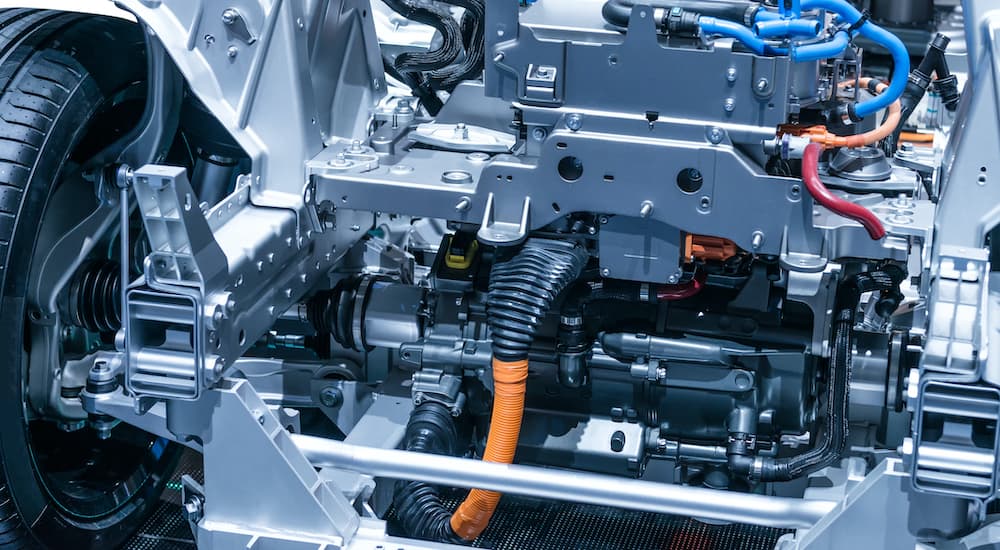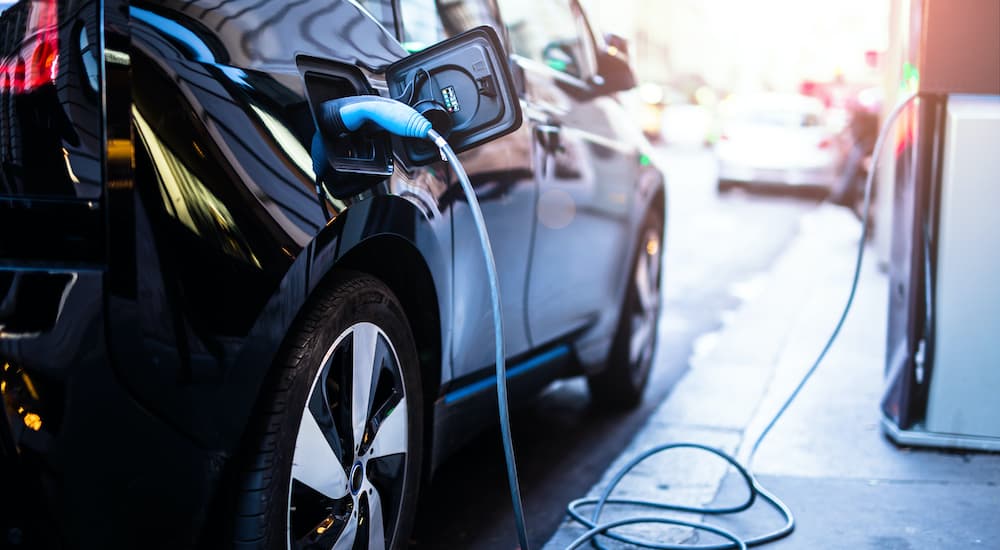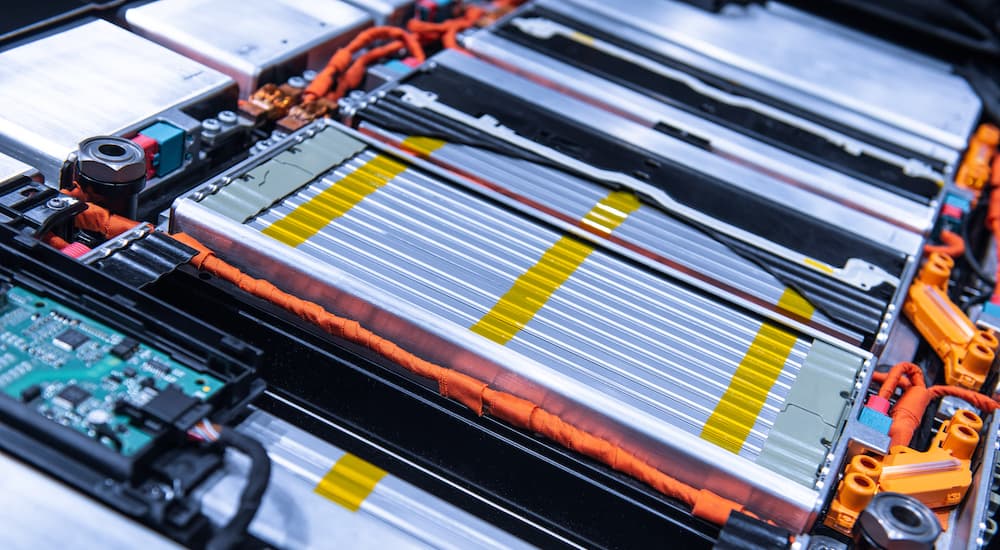We find ourselves at an interesting moment in the auto industry. Not since the development of the internal combustion engine itself and the birth of the industry has there been something quite so revolutionary and important for the future of transportation: the proliferation of Electric Vehicles (EVs). A lot of people (including me) are very excited about the kind of future that EV models will bring since they’ll eliminate the need for burning fossil fuels and hopefully make for cleaner air to breathe.
The move toward an electric future is not without its hiccups, however, and the one that’s perhaps most important is what will happen with all of the batteries that future requires. EV models don’t just run on good intentions; they require serious amounts of power from hundreds or thousands of battery cells storing electricity. While these batteries might seem more complicated than the ones in your phone or TV remote control, they ultimately function in pretty similar ways. This means figuring out what to do with thousands, and eventually, millions, of these batteries once they stop working could be a problem.
How EV Batteries Are Designed
Before I get too far into talking about the problem that EV batteries will present in the future (and they’re already starting to be an issue), it’s important to understand how these batteries work. Don’t worry; I’m not about to give you a high school chemistry lesson and discuss how lithium atoms within the batteries move to create a charge. But we do need to look at how they’re designed.
If you peel back the floor of an electric car, you’ll find a large bank of batteries, usually in a big, fairly flat battery shell. This is really heavy, so it’s located in the floor to keep the car’s center of gravity low, which typically helps with handling. Inside this large shell, you’ll find a series of battery modules, usually large rectangular units designed to hold the battery cells. Now inside these modules (the last layer, I promise), you can find the actual battery cells.
These battery cells are where the power for an EV is stored (again, it’s a chemical reaction that creates a charge). Depending on the vehicle, there are hundreds or thousands of cells within these modules. Worldwide, about 11 million EVs were on the road last year (each with hundreds or thousands of these cells); industry experts are predicting that by 2030, it’s likely that more than 140 million EVs will be in use. That’s a lot of batteries.

EV Battery Lifespan
Now here’s the thing: these batteries don’t last forever. Just like any other battery, over time, they lose the ability to create a charge and power your vehicle. They’re all rechargeable, of course, so they lose a charge while in use – how quickly depends on the battery and the range of the EV – then they can be recharged and continue to be used. But eventually, you will no longer be able to recharge the batteries in your EV. It’s the same as the battery in your phone or any other device; even if it’s rechargeable, at some point, it has to be replaced.
Once this happens, then what? The batteries in EV models have all sorts of elements in them, including nickel, cobalt, iron-phosphate, and lithium. The good news is that these batteries are designed to be sealed very strongly, so they’re not about to start leaking everywhere (this isn’t entirely good news, as we’ll see down below). They’re not an environmental hazard just on their own.
That being said, the materials used in them are valuable, and there is a finite supply of them – things like cobalt and nickel are particularly expensive. On a long enough timeline, there is the chance that these battery cells could be damaged at a landfill. They might also end up being disposed of in a fire, which can cause explosions or result in the release of hazardous and toxic materials. In other words: something needs to be done long-term.
The Solution: Recycling
Fortunately, there’s already a pretty good solution for what to do with these batteries: recycling. As I said a moment ago, the nickel and cobalt used within them is quite valuable. Valuable enough that the process of opening these batteries up to extract these metals is worthwhile; selling the metals back to the battery manufacturers can help reduce the need to keep mining and producing the raw materials to make them.
There are two common approaches used for recycling EV batteries so far with pretty good results (you can’t just crack one of these batteries open and get the metal out – more on that below). The first is called “pyrometallurgy” and if that sounds like it involves fire, then spot on. It’s essentially burning the batteries, melting them down into slag, and then using different methods to extract the metals you want out of them.
The other method is called “hydrometallurgy,” and while that might sound like it involves water, it actually involves acid. You basically submerge the batteries in acid to dissolve them, creating a soup (for lack of a better word) of chemicals and metals. You then retrieve the metals from this hazardous ooze – of course, you have to be incredibly careful because the types of solvents and acids that can dissolve an EV battery are really bad news.
Complications With EV Battery Recycling
You might be wondering, “If there are two good methods for recycling EV batteries, then what’s the problem?” Good question, and I’ll tell you what the problem is. EV batteries are designed to remain intact during hard use, with no real consideration for recycling in mind when they’re made. Remember when I said they’re very sturdy and difficult to get into? Well, when you’re trying to get into them to extract their materials for recycling, that’s a problem.
For example, the polyurethane cement used to hold together the battery cells in a Tesla is nearly indestructible, making it incredibly difficult to get them apart and get into them. Even the cells in a Nissan Leaf, which are more accessible, still require about two hours just to take the module apart. On top of that, the manufacturers don’t really bother indicating which type of materials were used to make the battery – so companies trying to recycle them have to do some research and figure it out. The wrong approach can be disastrous.
Just as bad, the methods I described above aren’t ideal. Pyrometallurgy has a tremendous risk of releasing noxious and deadly gases as you burn the batteries, so it has to be very carefully controlled. And one solvent that has been successfully used to extract metals through hydrometallurgy is so toxic that its use is restricted by the European Union, and the US Environmental Protection Agency has deemed it an “unreasonable risk” for workers.
Future Efforts and Better Batteries
As you can see, there are some issues. However, the good news is that scientists and researchers are realizing what a big problem this is now when there’s still time to tackle it. There’s already a push for car manufacturers to make their battery cells more accessible, with recycling in mind when they’re developing their platforms. One Chinese company has already done so, allowing for easy access to the cells for recycling in response to actions by China in 2018 that require EV manufacturers to ensure their batteries can be recycled.
A similar rule might come this year from the European Union, though we’re a bit slower to get on top of this situation here in the US. While not much has happened yet federally, California seems to be moving toward a similar act that would require battery manufacturers to plan for recycling. At some point, a decision will have to be made on where the expense lands: on the consumers driving EV models or the manufacturers making them. Either way, tackling clean and effective methods for recycling EV batteries will be a vital part of the auto industry’s future.





